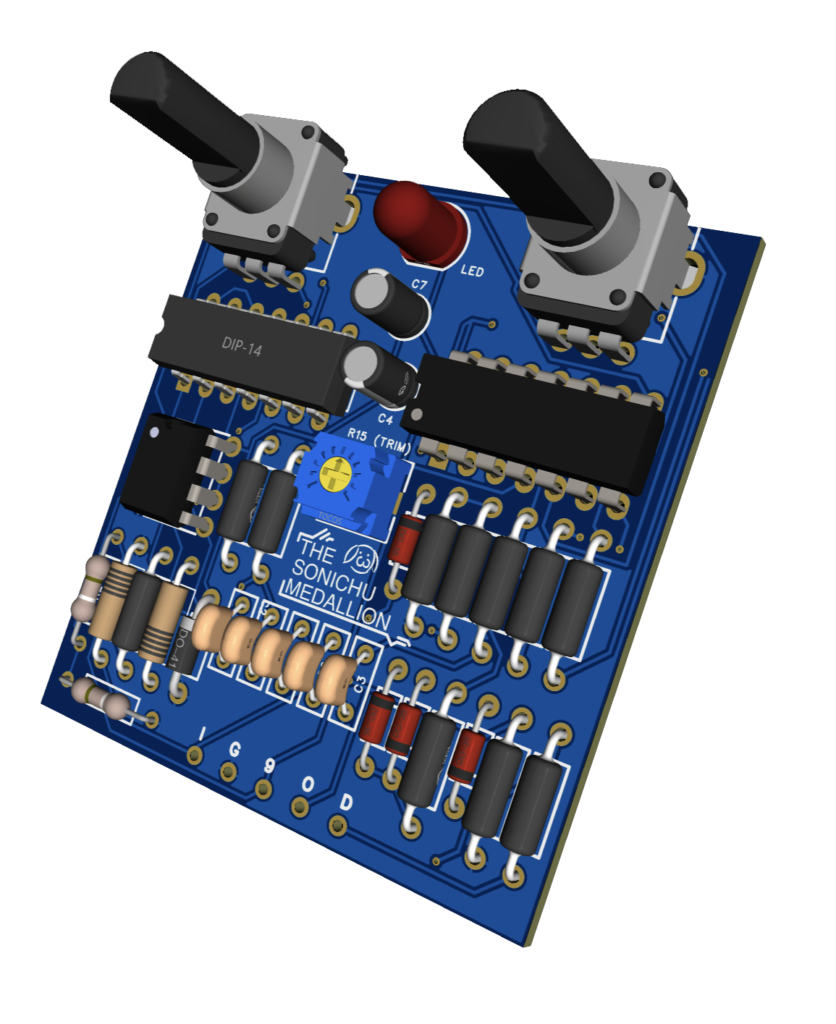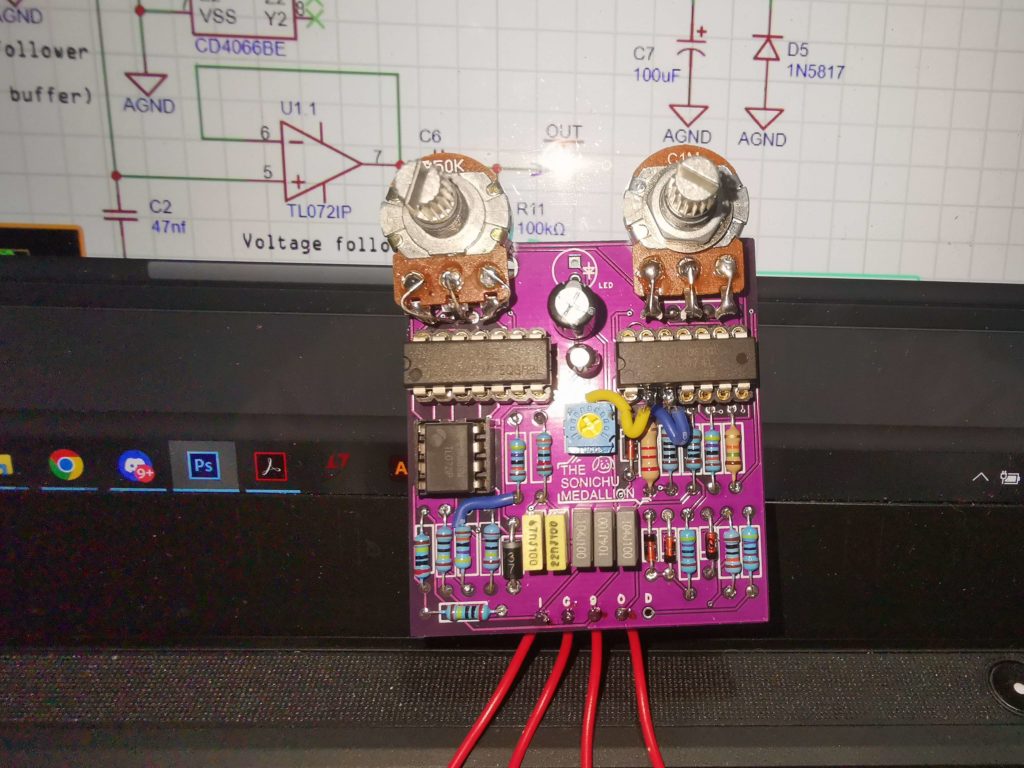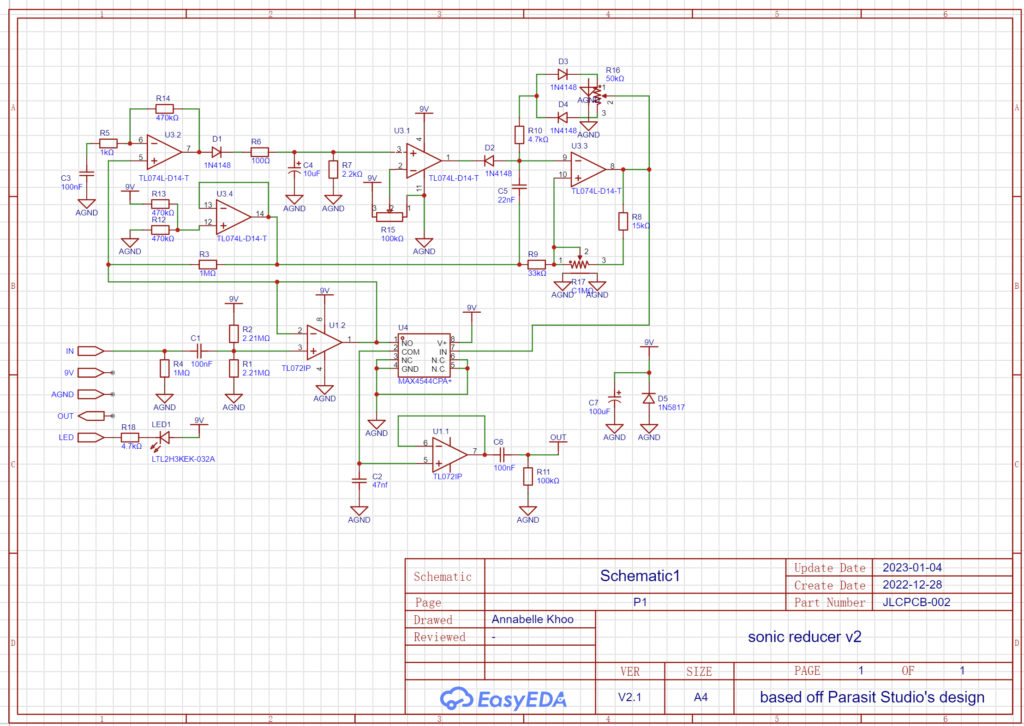
First time using JLCPCB
Pretty fuss free, EasyEDA is an easy software to learn too
I was interested in the Experimentalist Anonymous Analog Bit Crusher, but read many reviews about the oscillation pulse bleeding through persistently which led me to the Parasit Studio Sonic Reducer. It uses an analog switch IC to toggle the incoming signal ON or OFF depending on the signal coming from an oscillator. Taking bites out of the signal and achieving a low sample rate kind of effect.

The beauty of this design is that there is also a sidechain which takes the incoming signal, amplifies it, rectifies away the negative half and then puts it through a comparator against a set voltage; adjustable via a trimmer pot. When the processed signal is lower than the set voltage, the comparator output is sinked to ground and the oscillator side is likewise sinked through the diode D2.
This in effect silences the circuit whenever the guitar is not being played or the signals coming out from the guitar are below the set threshold. In practice, it works fairly well albeit for the guitar only.
For my bass, there are several issues which I hope to tackle and rectify in the future.
Parasit Studio is kind enough to release the stripboard layout and etching layout for their Sonic Reducer V1.0, but I really wanted to make the V2.0. The first step was to verify the schematic provided in LTspice, then set about laying out the PCB in EASYEDA. Right off the bat, I could not make it a single layer pcb and also have it fit in a 1590B Hammond case. This meant DIY etching was out the window and I settled for making a 2 layer pcb and having that printed by JLCPCB. All in all, it went very very easily.


My dislikes:
1) The CD4066 chip is woefully underused, 3 of the 4 switches are not used and the 14pin chip takes up unnecessary space
2) When used with the bass guitar, the signal sustains too much and at too high a level. Leading to very audible sounds of the oscillator’s frequency as notes trail off.
Dislike #1 can be fixed by replacing the CD4066 by a single switch IC. As shown below:

Dislike #2:
For the bass guitar build, I might try to reduce the gain in the sidechain amplifier, so that the trimmer pot doesn’t have to be turned that close to maximum. Also would try to decrease the decay time set by C4-R7, hopefully this cuts the circuit off faster after notes are ended. I suspect the improvement would be negligible, proper muting and playing staccato might be the better solution.
I’ve also been told that the oscillator frequency bleeding in during sustains could be taken as a sonic character of the pedal instead of something undesirable. I mean, as long as it is stable and reproduceable, any sounds can be used as music right? Yet because the frequency stays fixed across all notes, it leads to a drone frequency being present instead of something responsive to the notes being played. This too can be a boon or a limitation, depending on how the pedal is used.

Final thoughts:
EASYEDA is awesome, I’m done with EAGLE especially after it became an Autodesk subscription model thingy.
The sonic reducer pedal is best used playing single note melodies, it gives a good range of low bitrate sounds. Ranging from a little bit of static, to old phone receiver beeps, to super mario sounds, to electronic appliance jingles, to industrial alarm blares and with both knobs maxed, slightly glitchy bit-crushed sounds.